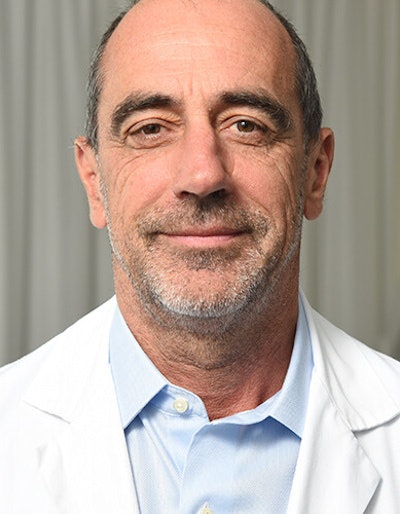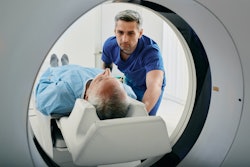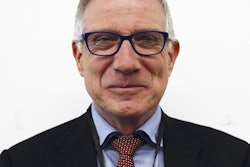
Medical professionals trying to cope with burnout should recognize that the condition originates in an evolutionary stress response to threats -- a response we share with the animal kingdom. Recognizing burnout's beastly origins is the first step in getting out of the rat race.
That was the take-home message offered by an expert panelist on March 4 in a session at the virtual ECR 2021 on understanding chronic stress and burnout and how medical professionals can stay happy, healthy, and resilient.
"Stress is the feeling you have in your head when your body responds to a threat," explained Dr. Witte Hoogendijk, PhD, a psychiatrist at Erasmus MC in Rotterdam, the Netherlands.
The threat is real
The threat felt real to fellow panelist Dr. Markus Berger, head of radiology at the Swiss Paraplegic Center in Nottwil, Switzerland, who described how he burned out in 2012.
“I had been under a lot of stress trying to cope with all the different requirements in my job, just trying to manage my to-do list,” he said.
 Dr. Markus Berger.
Dr. Markus Berger.He felt like he was at the pinnacle of his career at the Swiss center. Ironically, he was driving to work after a vacation with his family when he hit the wall. He began sweating and experienced severe vertigo and heart palpitations, and had to pull off the road.
“The world started turning around. I had no idea what was going on,” he said.
A corporate executive Berger knew eventually introduced him to mindfulness-based stress reduction. At first, he was skeptical of the candles and gongs, but it didn’t take long for the techniques to begin working, and he still uses them today.
The problem with burnout is that our acute stress response is an evolutionary remnant. It was present in animals -- beasts -- before humans evolved. Our system in fact is almost identical to that of mice, which when exposed to natural predators like owls exhibit the same chemical and physiologic signs of chronic stress and burnout that humans do.
 Dr. Witte Hoogendijk, PhD.
Dr. Witte Hoogendijk, PhD.Our triggers aren't natural predators, however, as they were when we lived in small hunter-gatherer communities millions of years ago. Triggers for humans today can be as mundane as a full email inbox. Species on the planet require 100 million years to completely adapt to a new environment -- our stress response system simply hasn't had time to adapt to new developments like the Industrial Revolution and Information Age.
"This is the first step in evolution therapy: Realize that you are still a beast," Hoogendijk said.
He suggested checking out of the rat race once in a while and recommended taking the following steps:
- Spend more time outdoors.
- Make time to exercise.
- Focus on quality, not quantity when it comes to communications. Prioritize personal communications with family and close friends.
- Eat well.
- Sleep well.
- Reduce screen time on your phone.
- Take time to relax.
The crisis before the crisis
Chronic stress and burnout among healthcare professionals in the U.S. was already a public health crisis before the COVID-19 pandemic, with 40,000 medical students, 60,000 residents and fellows, and 490,000 physicians reporting burnout, noted fellow ECR panelist Dr. Colin West, PhD, an internist at Mayo Clinic in Rochester, MN.
 Dr. Colin West, PhD.
Dr. Colin West, PhD.West defined burnout as a mixture of emotional exhaustion ("I've got nothing left to give") and depersonalization ("I feel callous") -- states of mind that are "antithetical to our profession."
And the cost of burnout is astronomical, given that its consequences include medical errors, impaired professionalism, reduced patient satisfaction, staff turnover, blunted growth in medical knowledge, depression and suicidal ideation, and motor vehicle crashes. The total cost of physician burnout is estimated at $4.6 billion dollars a year, he said.
Yet burnout isn't just a problem for the individuals experiencing it to "fix." It's a systemic problem. Perceived messages that health professionals need to "toughen up" to cope with a toxic working environment may only deepen cynicism. The toxic environment itself needs to be addressed.
Individual-focused solutions, although important, can't be the mainstays to promote well-being because even the most resilient of healthcare professionals are at substantial risk of burnout. Resilience is something healthcare professionals already bring to work, especially during the COVID-19 pandemic.
"Healthcare professionals run toward problems we advise everyone else to run away from," West said.
But we can also think about resilience as an organizational characteristic that is built on positive leadership, intentional strategies, and clear communication around preparedness. Organizations can manage risk and promote positive cultures and behaviors that are adaptive, and thus allow the individuals within an organization to thrive and exercise their own innate resilience skills.
After all, resilience is what has allowed us to succeed in careers to date, West concluded.




















